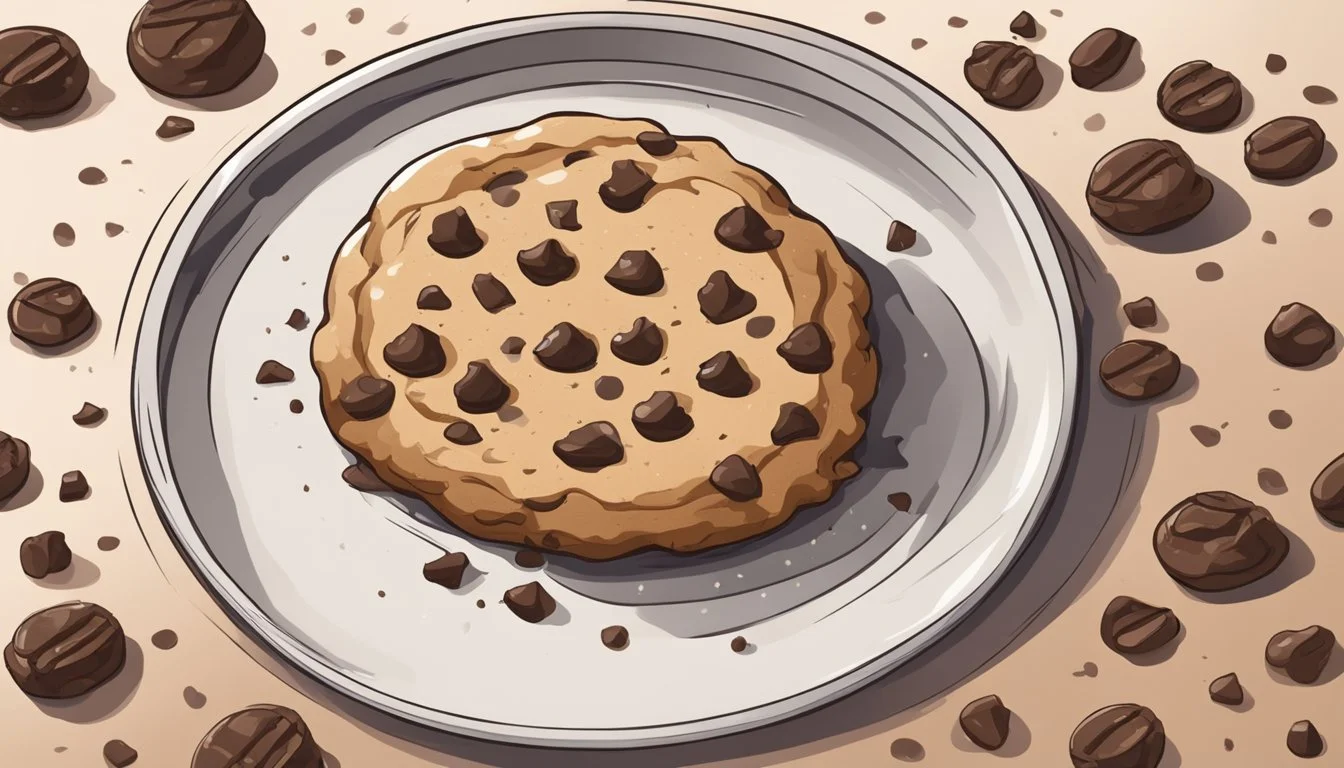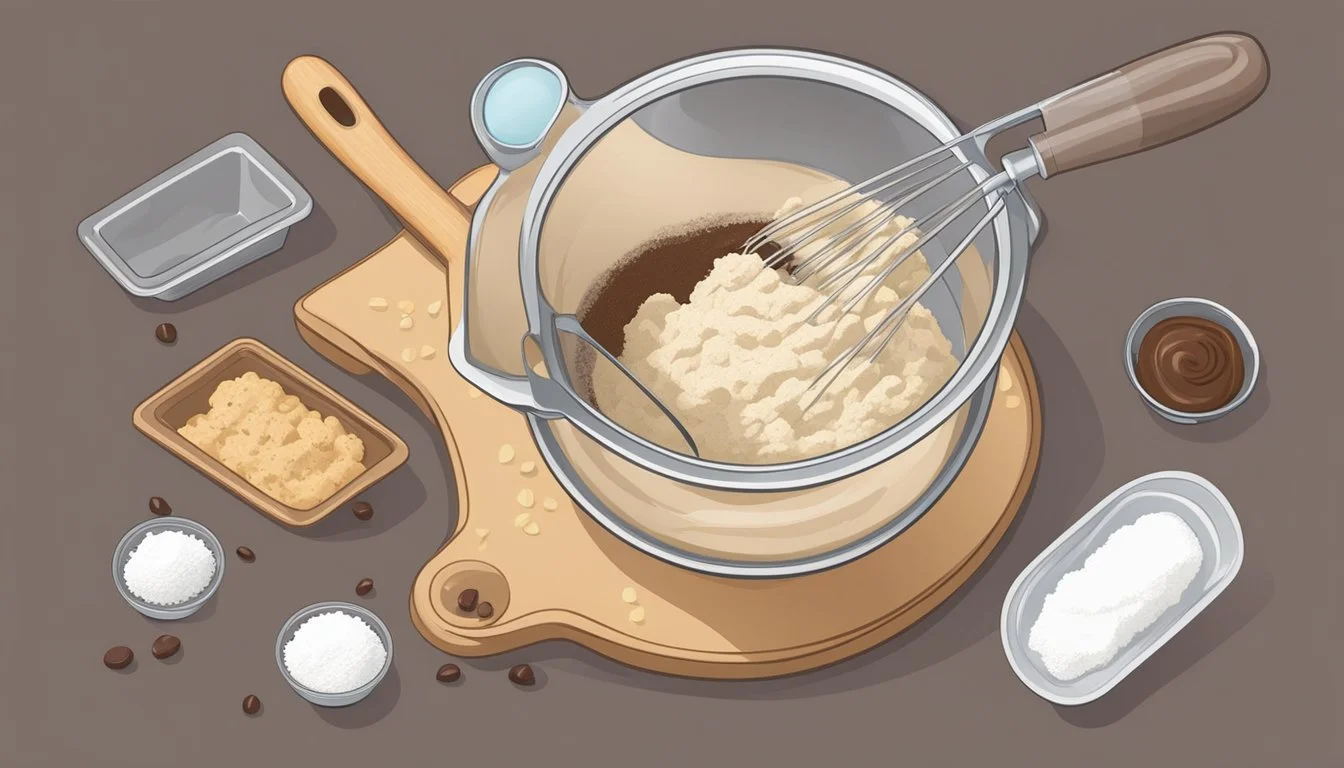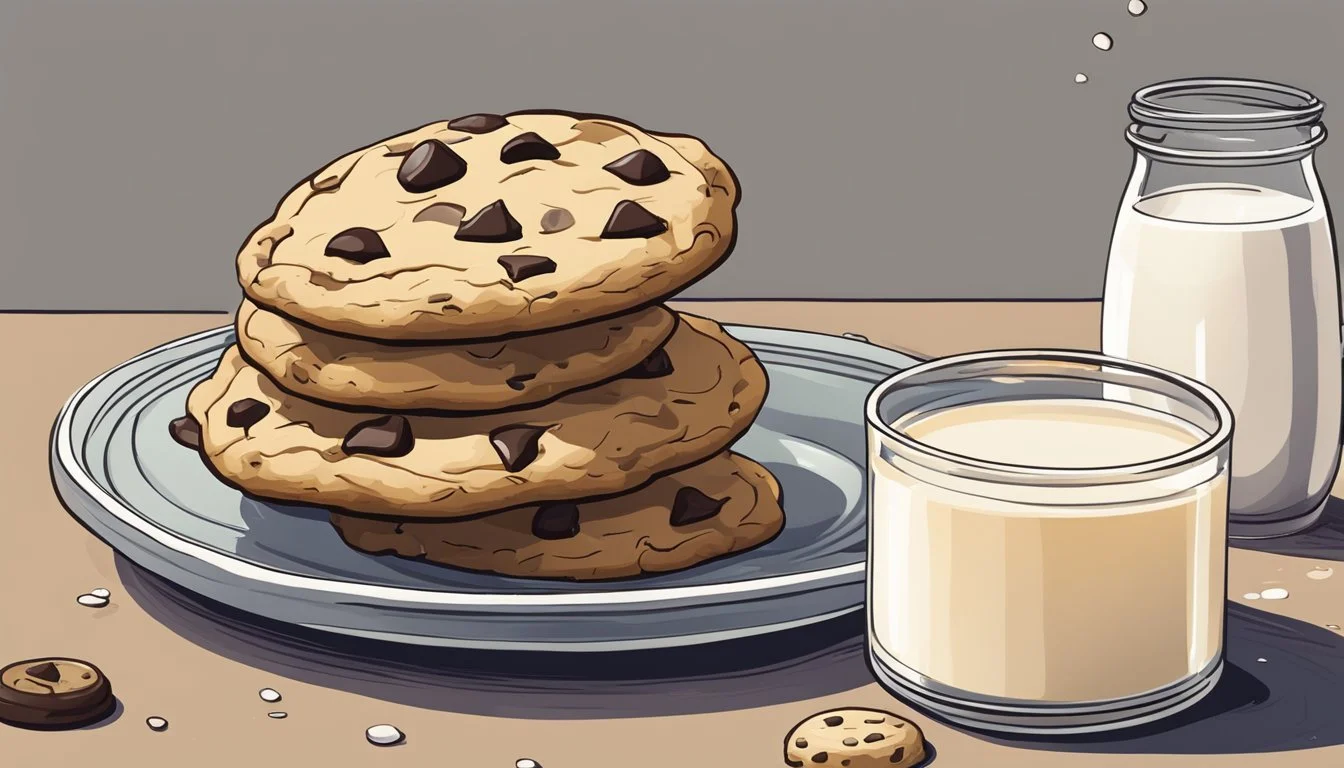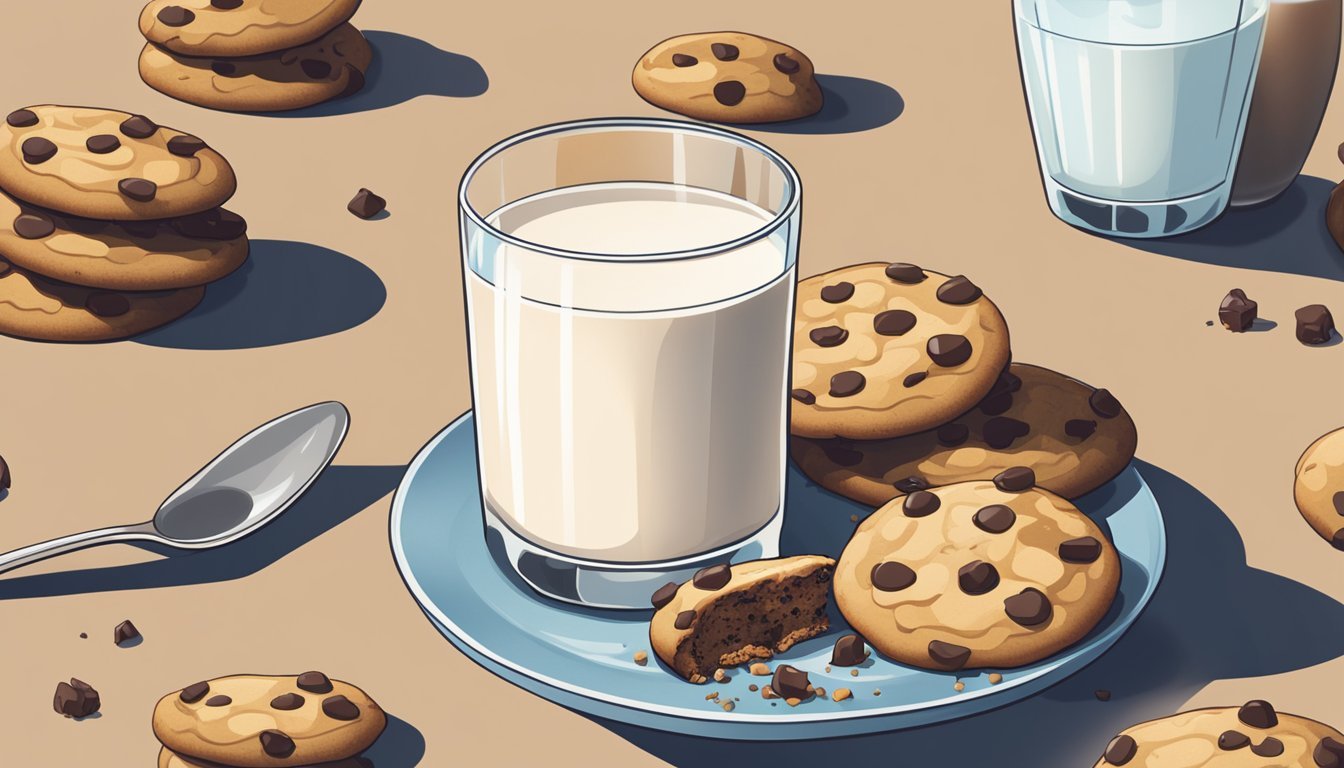How Do You Eat a Chocolate Chip Cookie?
Discover the Best Techniques
Eating a chocolate (What wine goes well with chocolate?) chip cookie might seem straightforward, yet everyone has their own method that suits their taste. Some might argue that there is an art to enjoying this classic treat, with techniques ranging from savoring it slowly to pairing it with the perfect beverage. Chocolate chip cookies appeal to a broad audience due to their perfect balance of textures and flavors, from the sweetness of the chocolate to the richness of the dough.
Dunking chocolate chip cookies in milk is a time-honored tradition. The milk enhances the cookie's flavors and softens its texture, offering a comforting and nostalgic experience. Those looking for a sophisticated twist might pair their cookie with coffee or a glass of red wine, allowing the complexity of the chocolate to complement the drink's depth of flavor.
For those who prefer to focus on the cookie itself, there is a variety of techniques. Some enjoy the cookie fresh out of the oven when it's still warm and gooey, while others prefer to let it cool to achieve a more firm and crumbly texture. Regardless of personal preferences, chocolate chip cookies remain a versatile and beloved dessert that can be enjoyed in countless ways.
Understanding Chocolate Chip Cookies
To truly appreciate chocolate chip cookies, one must ponder over its historical roots, the role of each ingredient, and the nutritional aspects that come into play.
History and Popularity
The chocolate chip cookie is a classic dessert beloved across generations, with its origins dating back to the 1930s. It was accidentally created by Ruth Graves Wakefield, who ran the Toll House Inn. These cookies quickly soared in popularity, becoming an American cultural icon, often linked with warmth, comfort, and home-cooking.
Key Ingredients and Their Functions
The best chocolate chip cookies are made from a harmonious blend of specific ingredients, each serving a unique function to create the perfect cookie.
Butter: Provides moisture and flavor; using unsalted butter allows for better control of the saltiness.
Sugars:
Brown sugar: adds chewiness due to its moisture content.
Granulated (white) sugar: offers sweetness and helps with spreading.
Eggs: bind the ingredients, add structure and richness.
Vanilla Extract: contributes a subtle aroma and flavor depth.
Flour:
All-purpose flour: builds the structure by providing gluten.
Listed nutrients in a typical cookie recipe:
Ingredient Function Chocolate Chips add flavor, texture, and sweetness. Baking Soda leavens the cookies, making them rise. Salt balances sweetness, enhances flavor.
The Classic Chocolate Chip Cookie Recipe involves combining these elements with a precise balance and sequence to achieve the desired taste and texture.
Nutritional Considerations
In terms of nutrition, chocolate chip cookies should be enjoyed in moderation. They typically contain:
Calories: on average, a cookie has about 100-160 calories depending on size and add-ins (like nuts or extra chocolate chips).
Fats: from butter and chocolate, contributing to the cookie's richness.
Sugars: both brown and granulated sugars are simple carbohydrates.
Proteins: a small amount present from the eggs and flour.
Nutritional content can be varied by making substitutions such as using a lower fat butter substitute, adding nuts for protein, or using darker chocolate with less sugar content.
The Baking Process
Baking the perfect chocolate chip cookie involves precise measurement, careful mixing, and controlled baking. The following subsections guide you through the necessary steps to go from raw ingredients to delightful treats.
Preparing the Dough
A chocolate chip cookie recipe typically starts with combining dry ingredients—flour, a leavener such as baking soda or baking powder, and salt—in a mixing bowl. In another bowl, an electric mixer is often used to cream together butter and sugars until they achieve a light and fluffy texture. Eggs and vanilla extract are then incorporated into the creamed mixture. Gradually, the dry ingredients are mixed in, ensuring they are thoroughly combined without overmixing to avoid tough cookies. Lastly, chocolate chips are folded into the cookie dough, using a wooden spoon or spatula.
Dry Ingredients: Flour, baking soda or powder, salt
Wet Ingredients: Butter, sugar, eggs, vanilla extract
Final Addition: Chocolate chips
Baking Techniques
Once the chocolate chip cookie dough is ready, it is time to bake. Preheat the oven to the desired temperature, which typically ranges from 350°F (175°C) to 375°F (190°C). Line baking sheets with parchment paper to prevent sticking and ensure even heat distribution. Drop spoonfuls of dough onto the sheets, leaving ample space between cookies for expansion. Bake according to your cookie recipe's specified time, usually between 8 to 12 minutes, until the edges are just turning golden. Temperature control is crucial, as an accurate oven temperature ensures even baking and the perfect texture.
Oven Preparation: Preheat to correct temperature.
Baking Sheets: Line with parchment paper.
Cookie Placement: Equally spaced spoonfuls of dough.
Bake Time: 8-12 minutes or until golden-edged.
Post-Baking Tips
Once baked, it is essential to remove the chocolate chip cookies from the oven and transfer them to a wire rack using a spatula. This stops the cooking process and allows air to circulate, cooling the cookies evenly. After they've cooled, store cookies in an airtight container to retain their freshness. Cookies can also be frozen for long-term storage; to do so, let them cool completely before placing them on a baking sheet in the freezer. Once frozen, transfer cookies to a freezer-safe airtight container.
Cooling: Transfer to a wire rack.
Storage: Use an airtight container.
Freezing: Cool completely, then freeze on a sheet before storing.
Consumption and Storage
When it comes to chocolate chip cookies, enjoying their flavor and maintaining their quality are paramount. The way one eats and stores these cookies affects both texture and taste.
How to Eat a Chocolate Chip Cookie
It's universally acknowledged that chocolate chip cookies can be eaten in many ways depending on one’s textural preference. For a crisp bite, one should consume them at room temperature. For a gooey experience, a brief warming in the microwave may suffice. Others may prefer to enjoy their cookie cold; they can briefly chill the cookie dough in the refrigerator before baking to enhance its texture.
Storing for Freshness
Proper storage is critical for preserving the intended flavor and texture of chocolate chip cookies. Here are optimal storage techniques:
Room Temperature:
Airtight container: to maintain freshness and prevent staleness.
Cool, dry place: chocolate chip cookies fare best away from heat sources and sunlight.
Freeze:
To freeze dough:
Place scoops of cookie dough on a baking sheet.
Freeze until solid, then transfer to a freezer-safe bag, removing as much air as possible.
Label and freeze for up to 3 months.
Freeze Baked Cookies:
Cool cookies completely before freezing.
Layer between sheets of parchment paper in an airtight container.
Freeze for up to 3 months—thaw at room temperature when ready to eat.
By adhering to these guidelines, chocolate chip cookies can maintain the desired mouthfeel, whether that be chewy, soft, or crunchy.
Recipe Variations and Enhancements
When it comes to chocolate chip cookies, the possibilities for customization are vast. One can follow the basic recipe for a classic taste or experiment with various additions and substitutions to create a cookie that caters to personal preferences or dietary needs.
Customization Options
Chocolate Varieties: A simple tweak to the classic recipe is the introduction of different types of chocolate. While semi-sweet morsels are standard, one might opt for milk chocolate, dark chocolate chunks, or even a combination to add depth to the flavor profile.
Mix-Ins: To personalize the texture and taste, one can incorporate various mix-ins into their dough. Common additions include:
Chopped nuts: Walnuts, pecans, or almonds for a crunchy contrast.
Oats: For a chewier cookie with a hearty texture.
Dried fruit: Such as raisins or cranberries, for a sweet tartness.
It is crucial to maintain balance in the recipe, ensuring that the added components do not overwhelm the classic chocolate chip cookie experience.
Making Dietary Adjustments
Gluten-Free: For individuals with gluten sensitivities, one can replace the standard wheat flour with a gluten-free alternative such as almond flour or a gluten-free all-purpose flour blend.
Vegan and Egg-Free: To adapt the recipe for vegans or those allergic to eggs, the traditional egg can be substituted with an egg replacement like a flax egg or commercially available egg replacers.
Healthier Options: For a reduced-guilt treat, one might want to try:
Reducing sugar: Using less granulated and brown sugar or substituting with natural sugar alternatives.
Healthful Fats: Substituting a portion of the butter with unsweetened applesauce or mashed avocado can reduce fat content.
Creatively adapting recipe ingredients allows the creation of variations such as peanut butter cookies, snickerdoodles, chocolate chip cookie cake, and even shortbread cookies. Each variation preserves the essence of the classic cookie while offering a unique experience tailored to diverse palates and dietary requirements.
Advanced Topics
In this section, we zoom in on the nuanced aspects of chocolate chip cookies, focusing on the intricacies of texture, the chemistry behind baking the perfect batch, and innovative ways to serve this classic dessert.
Exploring Different Textures
The texture of a chocolate chip cookie can vary from crispy to chewy, often hinging on the ratios used in the recipe and the bake time. For a chewier cookie, a baker might increase the brown sugar content, leading to more moisture retention. Adjusting the baking time is crucial; underbaking slightly will result in a softer interior. Using a cookie scoop ensures uniform size and texture, as each cookie will bake evenly.
The Science of Baking Cookies
Achieving the desired texture and consistency in a chocolate chip cookie boils down to science, particularly the use of the right leavening agent. Baking soda, a common leavening agent, helps cookies spread and become chewy, while baking powder results in a cake-like texture. Cookie texture is also a result of the Maillard reaction, where higher baking temperatures, above 356 degrees Fahrenheit, cause sugars to caramelize, giving a nice tan on top of the cookies as cited in recipe reviews.
Creative Serving Ideas
One can transform a simple chocolate chip cookie recipe into a stunning dessert with a few creative serving ideas. Incorporating mix-ins such as nuts or candies can add extra flavor and texture, while pressing the cookie dough into a pan and baking it as a chocolate chip cookie cake is a crowd-pleaser for celebrations. Recipes often encourage the use of a wet spatula or hands to smooth the top of bars or cakes (how long do cakes last?), ensuring a polished presentation.
Final Thoughts and Tips
As we conclude, it's important to underscore the intricacies of perfecting chocolate chip cookies, from the selection of ingredients to the execution of the recipe. Precision in these steps ensures delicious homemade chocolate chip cookies.
Reviewing Key Points
The key to an exceptional chocolate chip cookie lies in the ratio of butter to sugars and the method of combining them. An electric mixer should be used to cream the butter and sugars until the mixture is light and fluffy, which typically takes about two minutes. Reviews of recipes often stress the importance of not skimping on the chill time; allowing the dough to rest can significantly improve the flavor and texture.
Common Mistakes to Avoid
Overmixing the dough: This can lead to tough cookies.
Ignoring chill time: Skipping this step can result in cookies that spread too much.
Incorrect measurements: Precision is key; always measure ingredients accurately.
Further Reading and Resources
For those seeking to dive deeper into the art of the chocolate chip cookie, a multitude of resources are available. Expert bakers often share their tips and tricks online, and there are countless reviews of various chocolate chip cookie recipes to help one discern the best approach for their taste. A recommended resource is "The Ultimate Guide to Chocolate Chip Cookies" for detailed insights and additional recipes to try.








